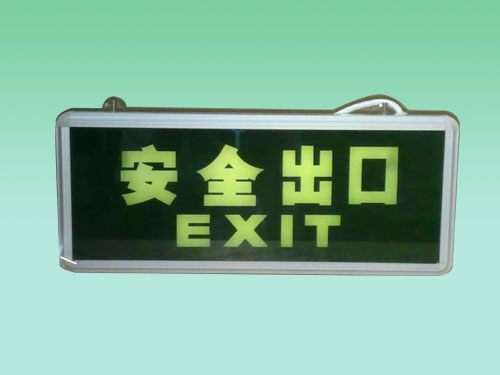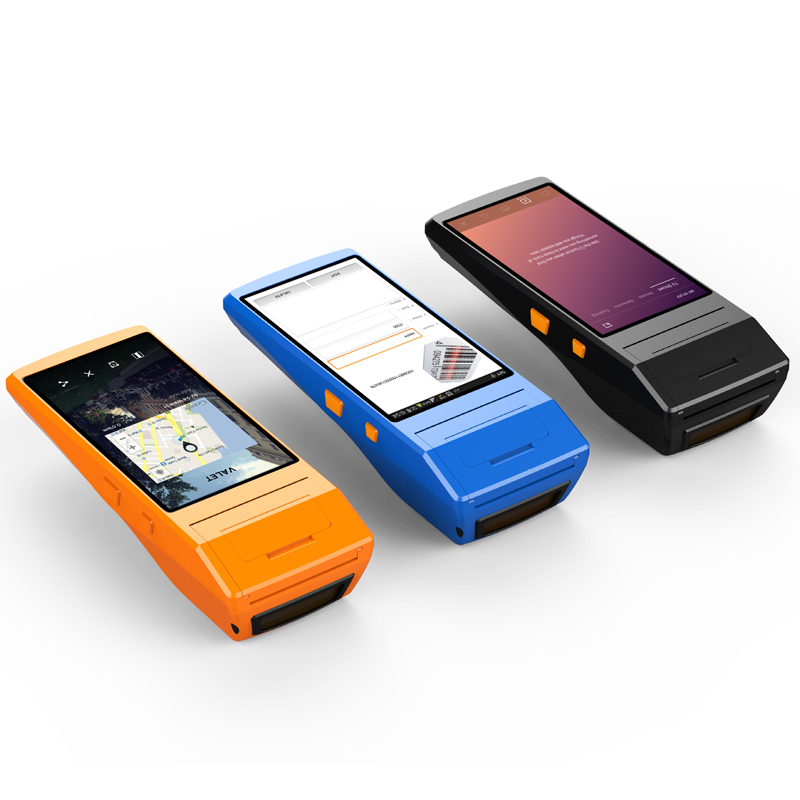 In recent years, many high-rise public buildings and foreign-related buildings have been built in China, and the role of emergency lighting has become increasingly prominent. This has caused the fire departments and design agencies to attach great importance. However, our country still lacks perfect and detailed standards and norms. The Civil Building Lighting Design Standards (hereinafter referred to as the "Band Mark") and the "Industrial Lighting Design Standards" (hereinafter referred to as the "Labor Standards") have very strict rules.
In recent years, many high-rise public buildings and foreign-related buildings have been built in China, and the role of emergency lighting has become increasingly prominent. This has caused the fire departments and design agencies to attach great importance. However, our country still lacks perfect and detailed standards and norms. The Civil Building Lighting Design Standards (hereinafter referred to as the "Band Mark") and the "Industrial Lighting Design Standards" (hereinafter referred to as the "Labor Standards") have very strict rules. In 1993, China Illuminating Engineering Society issued the "Guide to Emergency Lighting Design", which draws on international advanced standards, summarizes our country's experience, and has a certain guiding significance for design.
Let us talk about our understanding of several issues in emergency lighting design.
First, the name and classification of emergency lighting Since the 1950s, China has been using the term "accident lighting". In order to interface with the term "Emergency Lighting" common to CIE and countries such as Britain and the United States, and taking into account the fact that it is more accurate and more practical, the "civilian standard" and "gongban" that were promulgated in the early 1990s all used "emergency lighting". ". Changes in nouns are accompanied by certain changes in content and technical requirements. For example, in the past accident lighting was divided into two types, namely, accident lighting for evacuation and continuing work; and the emergency lighting specified by the new standard was classified into three categories, namely, evacuation lighting, safety lighting, and backup lighting. This three-category approach is consistent with the CIE's "Guidelines for Emergency Lighting in Buildings." However, the classification of countries is not uniform. For example, the Netherlands and the CIE are the same; the United States “Personal Safety Regulations†is divided into four categories, namely, the evacuation lighting is divided into two categories, therefore, and the classification of the CIE is relatively close; but the former Soviet Union and the United States norm It is divided into two categories;
From the understanding of the situation in the past two years, some designers are not very clear about the classification and its meaning, so that the engineering design does not meet the requirements. Therefore, it is necessary to clarify the meaning, role and design of each type of three types of emergency lighting, especially the role of evacuation lighting. The function of evacuation lighting shall provide the necessary illuminance for the evacuation channel to walk in the direction of the exit, and shall clearly indicate the exit position. According to these functions, evacuation lighting friends should be divided into two categories: First, evacuation lighting, etc. - to provide the necessary illuminance for the evacuation channel; Second, evacuation sign lights - to mark and indicate the use of exports. The roles of the two types of lamps are different. The lamp types and installation locations are different and cannot be confused. Especially evacuation indicators, there are many international expressions and technical requirements, and can not be arbitrarily applied.
Second, the illumination of the emergency lighting The new "Birthmark" and "Laboratory" control has principle provisions. There are also some problems in the design. Because most of the illumination intensity of the emergency lighting is relatively low, the uniformity is generally not high, and the average illumination is very different from the minimum illumination; in addition, the entire site is still required to have certain parts and regions, and the specified illumination is not the same.
Illumination levels, in addition to visual conditions, are also related to the economic level and energy conditions of a country.
The evacuation illumination illuminance is set by the United States not less than 10Lx (down to 6Lx at the end of the duration), Japan is not less than 1Lx (not less than 2Lx when using fluorescent lamps), and CIE regulations are not lower than 0.2Lx. China's "standard" requires that the main evacuation channel should not be less than 0.5Lx. The fire code requires that the minimum illumination should not be less than 0.5Lx. The illuminance of the two regulations is the same, but the actual difference is very large. The "gongbiao" uses the average illuminance, and the prescribed main channel does not require all.
Considering the actual situation in China and referring to the provisions of the CIE and the United States, the proposed time should at least be such that the instrumentation system generated on the evacuation aisle ground centerline should not be lower than 0.5Lx. And should maintain a good degree of uniformity.
As for the illuminance of safety lighting and standby lighting, the "industrial standard" provisions should not be lower than the general lighting of 5% and 10%, which is a general principle, I think the design should consider the following two characteristics, treat differently:
The first is that certain places should improve illumination, such as operating tables, should maintain the same illumination as normal lighting; some important public places, such as international conference centers, international competition stadiums, etc., as well as fire command centers and other places should have The same illumination as normal lighting.
The second is the standby and safety lighting of certain places, such as fire control rooms, generator rooms, transformer substations, etc., which are mainly to ensure necessary illumination of the required working and operating parts, and may not require the entire room or place to achieve the specified uniformity.
Third, the two standards of emergency lighting conversion time and continuous working time are not stipulated in the "industrial standard" and "minority standard". According to the CIE regulations, the requirements are as follows.
1. Normal power interruption, conversion time to emergency power supply:
(1) Evacuation lighting should not be greater than 15S. This is to consider adapting to emergency generator self-start conditions, such as the use of other emergency power sources, should strive for shorter.
(2), security lighting, should not be greater than 0.5S. Because the personal safety involved is more direct and the requirements are higher, the emergency power supply can only use automatic conversion of the power line or battery.
(3), spare lighting, should not be greater than 15S. For places with explosion hazards, etc., depending on the characteristics of the production process, a shorter period of time shall be determined as required; for locations such as shopping centers, checkout counters and the like, it shall not be greater than 1.5S to prevent theft.
2. When emergency power supply is used, the duration of emergency lighting requires:
(1) Evacuation lighting should not be less than 30 minutes. The time required for evacuation, search for people in buildings, and rescue should be considered when a fire or other disaster occurs. For ultra high-rise buildings, large-scale multi-storey buildings, large hospitals, etc., should consider a longer duration, such as 45,60,90min.
(2) Safety lighting and spare lighting should be determined according to production, process characteristics and duration. The special important public buildings, communication centers, broadcasting stations, television stations, power generation and distribution centers, and transportation hubs should continue to work for a long time.
Fourth, the emergency lighting power supply 1, as the emergency lighting power mainly has the following categories:
(1) Separated from the power network and the normal power supply;
(2) Emergency generator sets;
(3) The battery pack includes three types of battery packs: a centralized battery pack, a partitioned battery pack, and an emergency lamp.
(4) At the same time, there are two to three combinations of the above three types of power supplies.
2. Features and Applications of Standby Power Sources from the Power Grid This type of application is common, with fast, reliable, and long durations. In large and medium-sized cities, large and medium-sized factories, etc., it is often easier to obtain such power. Generally speaking, when there is an emergency backup power source for a power grid in a public building or a factory building due to production or work needs, it is first used as an emergency lighting power source. On the other hand, it is not economical and reasonable to set it exclusively for emergency lighting. Therefore, when designing, the power supply and emergency power supply for power equipment and emergency lighting should be uniformly arranged for economical and reasonable reasons. For standby lighting that continues to maintain production, the backup lighting of the fire pump room should use the same backup power as the production power equipment and fire pump, which is generally taken from the power grid.
3. Features and Applications of Emergency Generators After the power supply is interrupted, it takes a long time for the emergency generator to be put into operation. The unit that is often in standby state requires about 15 seconds of self-starting time for power failure, so it can only be used as an emergency power source for evacuation lighting and backup lighting. It cannot be used alone for safety lighting. Generator sets designed for emergency lighting are usually uneconomical and unreasonable. High-rise buildings are often set up for firefighting requirements. For example, in Hong Kong, more than eight-story public buildings are required to have generator sets for emergency power supply; in some industrial production plants or communications and traffic orders are often associated with the production and operation of power facilities. Need to consider together.
4. Characteristics and application of battery pack The battery has high reliability, rapid conversion, and can adapt to all kinds of emergency lighting. Disadvantages are small capacity, short duration, frequent maintenance and inspections, use in important public buildings, important underground structures, and sometimes in conjunction with other emergency power sources; in small public buildings, such as small hotels, when it is difficult to obtain backup power for the power grid It is more economical to use a battery.
Uninterrupted power supply unit (UPS) is a battery-powered mode with centralized or centralized centralized installation. Its performance indicators are all very high, but its price is also high. General emergency lighting should not be used. However, when there are UPSs in a building such as a computer station and the capacity can meet the requirements, it is appropriate to use UPS to provide emergency lighting in the facility. When the central transformer substation has a battery DC screen, it can use it to provide backup lighting in the company.
5. The application of the combined power supply is provided with two to three emergency power supplies at the same time. Of course, the reliability is higher, but the investment is greater. It is generally adopted only in important public buildings and high-rise buildings. In general, setting several kinds of power sources is determined according to the requirements of the building's production and fire-fighting power facilities, and not too many for emergency lighting.
Qunsuo are dedicated in Industrial PDA, our PDAs are durable and long time standby. We can provide handheld Barcode Scanner Pda, PDA with built in printer and so on. All of our PDA provide with demo app and free SDK, supporting our customers for use easily. We can provide our customers prompt after-sales service about any technical supports. Our PDA support many functions, including RFID reader, NFC reader, Barcode Scanner, UHF reader, fingerprint scanner, IC card reader, PSAM and etc. And also if you have any PDA OEM/ODM requirements, we can also help you to make prototype into physical.

Industrial PDA
Barcode Scanner Pda,Pda Scanner Android,Pda Printer Scanner,Pda Android 2D Barcode Scanner
Shenzhen Qunsuo Technology Co., Ltd , https://www.qsprinter.com